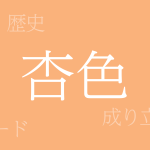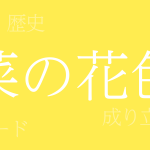Japan’s four seasons are beloved worldwide for their diverse colors, among which “Carrot Color (にんじんいろ – Ninjin-iro)” stands out. This unique hue has been cherished as a traditional Japanese color for its distinctive warmth and depth. This article explores the allure of Carrot Color.
About Carrot Color (にんじんいろ – Ninjin-iro)
Carrot Color (にんじんいろ – Ninjin-iro) refers to a reddish-orange hue reminiscent of carrots. This color is inspired by the rich shades of nature and has been a favorite among Japanese people for centuries. Carrot Color is known for its warmth yet vibrant energy and is used in various applications including clothing, accessories, and interiors.
The History of Carrot Color
Carrot Color has been in use since the Heian period, appearing in ancient documents and patterns. In the Edo period, its use as a dye became popular among the common people. Carrot Color has been closely associated with the cultural and lifestyle changes over the ages, shaping Japan’s color culture.
Carrot Color Codes
In digital design and web production, accurate color reproduction requires specific color codes. Below are the color codes for Carrot Color:
- HEX: #F47A44
- RGB: R:244 G:122 B:68
- CMYK: C:0.0 M:50.0 Y:72.1 K:4.3
The Western Name for Carrot Color
The Western names for Carrot Color are “Carrot Orange” and “Carrot Red.” These names are also used in the West to describe the color of carrots and are part of international color exchanges.
Conclusion on Carrot Color
As the name suggests, Carrot Color is a traditional Japanese color with a vivid hue reminiscent of carrots. It has a long history and is still utilized across many design fields today. By using the color codes provided, this beautiful hue can be represented digitally. We hope you continue to enjoy Carrot Color in various forms, evoking Japan’s tradition and culture.

























